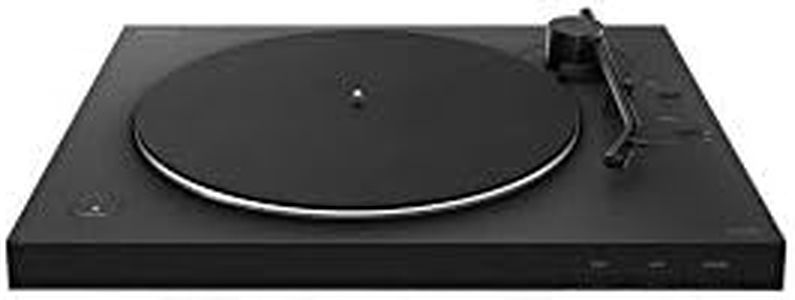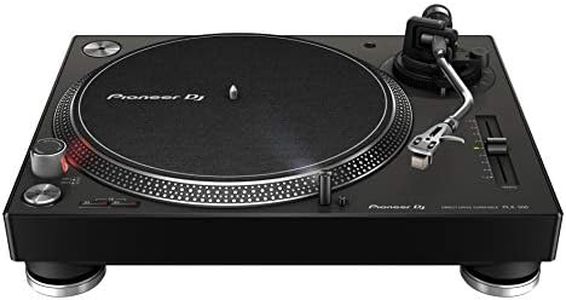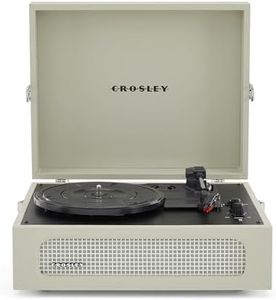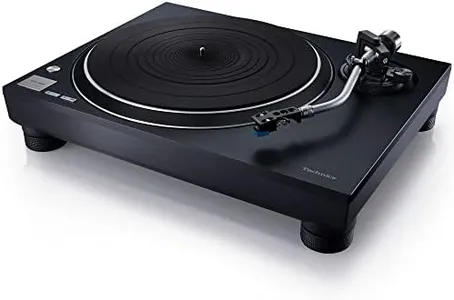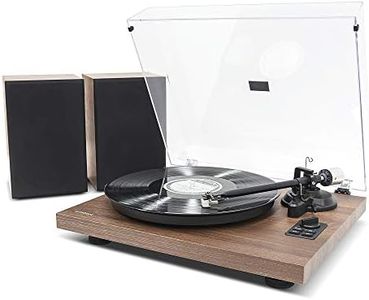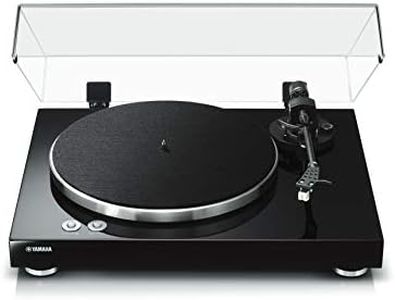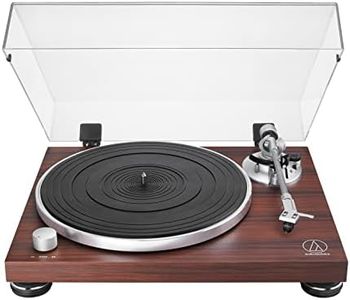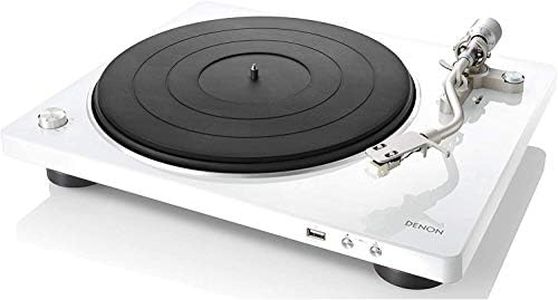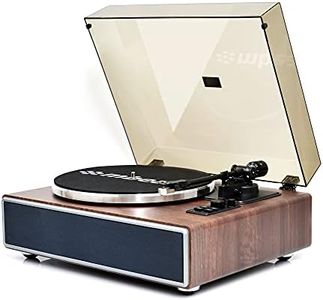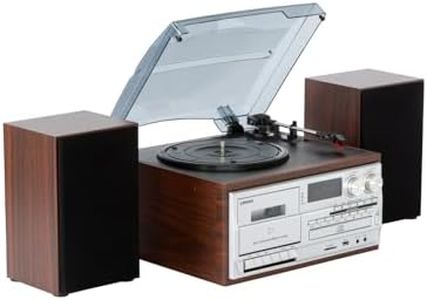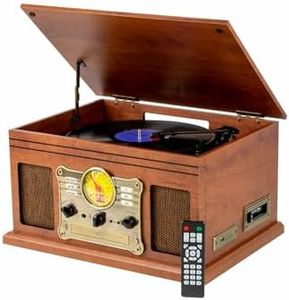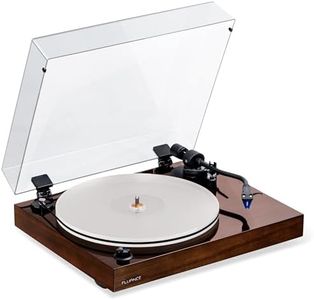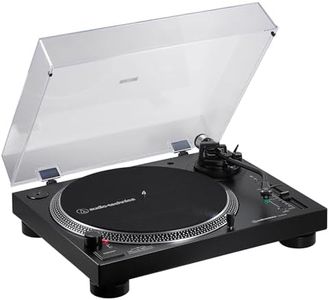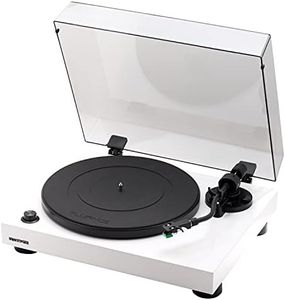We Use CookiesWe use cookies to enhance the security, performance,
functionality and for analytical and promotional activities. By continuing to browse this site you
are agreeing to our privacy policy
10 Best Vinyl Turntables
From leading brands and best sellers available on the web.#5
mbeat
11%OFF
MB-PT-28 Bluetooth Hi-Fi Vinyl Turntable Record Player with 36W Bookshelf Speakers, Supports 33/45 RPM Vinyl Record, Bluetooth Streaming via Smart Devices, Pre-installed Hi Fidelity MMC Stylus, Solid Metal Platter, Removable Dust Cover and Adjustable Counterweight and Anti-skating weight, Including Feature-Rich Audio Outputs, Line-in Pre-amplifier, USB Recording Function
Buying Guide for the Best Vinyl Turntables
Choosing a vinyl turntable can be an enjoyable experience if you understand the most important features to pay attention to. Whether you’re just starting your vinyl journey or looking to upgrade your listening experience, the goal is to match the turntable’s features to your needs and space. Think about how involved you’d like to be in playing records, what sound quality you’re after, and if you want a simple setup or a more customizable system.Drive TypeDrive type refers to how the spinning motion is created on a turntable. There are two main types: belt-drive and direct-drive. Belt-drive uses an elastic belt to spin the platter, which helps reduce vibrations for a warmer sound, making it a favorite among home listeners. Direct-drive places the motor directly under the platter, offering quicker start-up times and more consistent speeds, which is popular with DJs. If you want the most musical and classic sound for just listening at home, belt-drive is typically best. If you plan to use techniques like scratching or need quick start and stop, direct-drive will suit you more.
Playback SpeedsPlayback speed indicates what types of records you can play. The most common speeds are 33 1/3 and 45 RPM, suitable for most LPs and singles. Some turntables also support 78 RPM for older records. If you’re mostly playing modern albums or standard used records, having 33 1/3 and 45 RPM is enough. If you have or plan to collect vintage records, ensure your turntable can handle 78 RPM.
Cartridge and StylusThe cartridge is the part that holds the stylus (needle) and reads the grooves on your records. Quality can vary a lot here and impacts sound more than most other parts. Some turntables come with a fixed cartridge that you cannot upgrade, while others allow you to swap for higher-quality ones. If you’re new, a pre-installed cartridge is easier, but if you want to upgrade sound quality over time, look for a turntable where you can easily replace or upgrade the cartridge.
Built-in PreampA preamp boosts the signal from your turntable so it can work with regular audio equipment like speakers or receivers. Some turntables have a built-in preamp; others don’t. If you want a plug-and-play setup with minimal fuss, a built-in preamp lets you connect your turntable directly to powered speakers. If you already have audio equipment with a phono input or want to use a separate (external) preamp for higher sound quality, you can choose a model without a built-in preamp.
Manual vs. Automatic OperationThis relates to how much involvement you want with your turntable. Manual turntables require you to place the tonearm on the record and lift it at the end. Semi-automatic will automatically return the arm when a record is finished. Fully automatic turntables do everything at the push of a button. If you prefer simplicity and convenience, a fully automatic or semi-automatic is easier. If you value the traditional experience and don’t mind the hands-on process, manual is usually preferred for its reliability and possible higher sound quality.
Build Quality and PlatterThe feel and materials of a turntable influence both durability and sound. Heavier, more solid platforms (plinths) reduce vibrations, resulting in clearer audio. Platter material matters too; heavier platters help keep a consistent speed and reduce unwanted noise. Lighter, plastic builds work for casual listening and mobility, while heavier metal or acrylic platters are better for serious listening at home. Choose the level of build quality based on how important sound and longevity are to you.
Connectivity OptionsModern turntables may offer a variety of outputs: traditional analog, USB for digitizing vinyl, Bluetooth for wireless streaming, or even built-in speakers. If you want to connect to many types of modern devices or convert records to digital files, look for USB or Bluetooth. For purists focused solely on analog sound, standard RCA outputs are sufficient. Think about your current audio gear and future needs when considering connection types.
